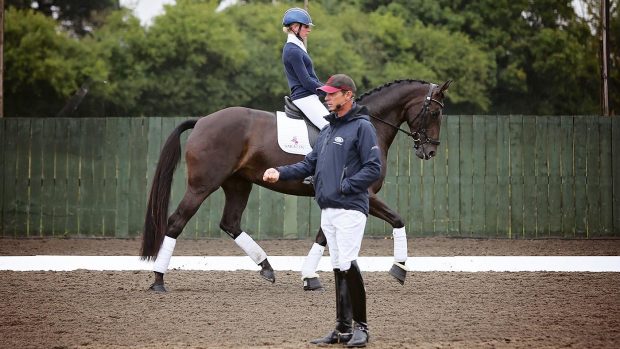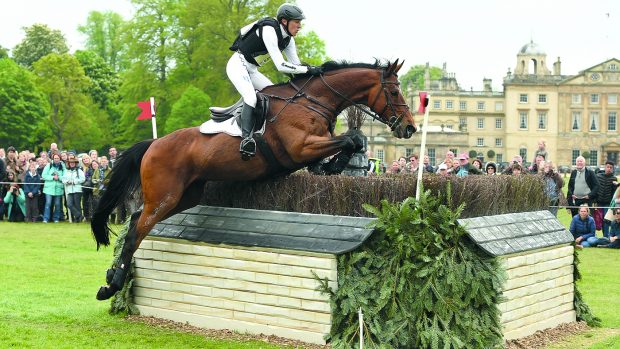FEI 5* Olympic dressage judge Stephen Clarke was president of the ground jury at London 2012 and a member of the ground jury at the Rio Olympics four years later. He has officiated at a host of major championships and was recipient of the Queen’s Award for services to British equestrianism in 2011. Stephen competed at international level for many years and was reserve rider for the Seoul Olympics in 1988.
Training the stars
Many years ago, I had a wonderful young stallion called Hermes. This horse had natural balance and a charming, if slightly laid-back, personality. He learnt most of the exercises very easily, with the exception of the flying change to the left. He was always obedient to the aid, but was often slightly late to change behind. However, as he developed his physical strength and collection, his flying changes became one of his best features.
Riders often struggle with the introduction of flying changes. Problems can stem from incorrect training in collected canter and, usually, a lack of activity, balance, straightness and self-carriage — the qualities of collection — within the canter itself.
Often, when a less experienced rider is training their horse to make a flying change, problems can arise through a lack of understanding of the necessary qualities listed above. Once the canter has been improved, any issues are not usually difficult to solve, as long as the rider prepares and positions the horse correctly, and understands how to create the necessary “instant reaction” to the aids, which requires split-second timing.
Prepare in advance
1. Before introducing the flying change, be sure you can make an instant and fluent canter strike-off, to true and counter-canter, from trot or walk on curved and straight lines. Counter-canter should be balanced with a degree of collection. Simple changes must be balanced and straight.
2. Transitions between paces and “gear changes” within the paces are a vital tool to increase your horse’s reaction to a half-halt, which develops activity and balance.
3. Lateral work in the canter (shoulder-fore positioning and half-passes) helps to give you the necessary control and influence over the shoulders and hindquarters, so you can position the horse correctly before asking for a flying change.
4. There are different ways to introduce a flying change, but my preferred method is to change from counter to true canter. If you are, for instance, on the left rein in counter-canter (right fore leading) use the left leg to create activity and put the horse more into the right rein contact. Then ask for a soft positioning to the left with the left rein and give the flying change aid with the right leg, as the horse is about to come off the ground in the moment of suspension.
This is best done on the short diagonal passing over the centre line, as it encourages more activity and collection. The long diagonal may invite your horse to become longer and flatter.
Continued below…
Like this? You might also enjoy reading these:
Subscribe to Horse & Hound this spring for great savings
Consider this…
- Many riders find it relatively easy to reach medium level, but then often find out the hard way that they’ve not quite achieved the qualities and reactions, within the collection of the canter, needed to be able to perform the flying changes with ease and fluency. In this instance, it’s necessary to take a step back in the horse’s schooling to improve the canter.
- If your horse is behind the leg, on the forehand, crooked or
against the hand, then it will be impossible to produce the flying change in the correct way. Revisit some of your earlier training to ensure that the basics are in place before you continue. - Be patient and avoid being tempted to progress to more complex movements before you and your horse are ready, as mistakes are often time consuming to rectify.
- Don’t be afraid to seek help — a pair of eyes on the ground can be a useful tool.
We continue to publish Horse & Hound magazine weekly during the coronavirus pandemic, as well as keeping horseandhound.co.uk up to date with all the breaking news, features and more. Click here for info about magazine subscriptions (six issues for £6) and access to our premium H&H Plus content online.



